The American Dream is an elusive myth. It is the idea that success is possible through hard work regardless of one’s social rank. In the early twentieth century, the American Dream meant everything to generations of immigrants arriving in this country seeking new beginnings, wealth, and a chance at improving the social circumstances of family back in the home country. Instead, many were met with racism, anti-miscegenation laws and low wages. The Man in the McIntosh Suit, Rina Ayuyang’s (Whirlwind Wonderland, Blame It on the Boogie) new graphic novel, examines the sacrifices made by the manong generation (first generation of Filipino immigrants) in pursuit of the American Dream through the lens of a camp of Filipino farm workers in 1920s Watsonville, California.
Bobot, a lawyer by training in the Philippines, has come to the United States in search of a better life for himself and his newlywed wife. He suffers through back-breaking labor for low wages at a farm outside of San Francisco. Bobot sets himself up as an example to his fellow camp workers by getting up the earliest and taking on dangerous jobs to help out older coworkers. But one day, Bobot discovers a secret one of these coworkers has held, and this secret sets in motion a journey into San Francisco’s seedy underground.
Ayuyang’s story is a sweeping, textured cinematic saga that marries romance, intrigue and social commentary into a deeply effective narrative. Ayuyang spoke to The Beat about her art and her appreciation for the sacrifices of this generation of forebears.
Nancy Powell: Wow! The Man in the McIntosh Suit is a fantastic read with so many emotional ups and downs and surprising plot twists. What inspired you to tackle a graphic novel about the Filipino farm worker movement set on the eve of the Depression?
Rina Ayuyang: Aw, thank you. Glad you liked it! I always wanted to create a detective comic series. When I decided to finally write The Man in the McIntosh Suit, I not only wanted to pay homage to classic Hollywood film noir, but I also wanted to do a character study of Bobot and his counterparts in the late 1920’s/early 1930’s, and I knew that I couldn’t tell their stories without talking about the circumstances they and many other Filipino immigrants found themselves during that time — and that was having to work in the fields or the canneries along the West Coast.
Powell: How much did you know about this piece of history? And was extensive research involved?
Ayuyang: I had general knowledge about the Filipino American diaspora when I learned about it as a college student in San Francisco State University. When I started writing the book, I dug into so many books and digital archives focused on the Filipino immigration experience, that were thankfully all made available by Filipino ethnic studies professors, writers, librarians, journalists, and community organizations. I also had access to family photo albums and interviewed my mom and auntie to learn more about my great grandfather, grandfather, and grand uncles and aunts’ experiences leaving the Philippines and starting new lives in San Francisco during the 1920s.
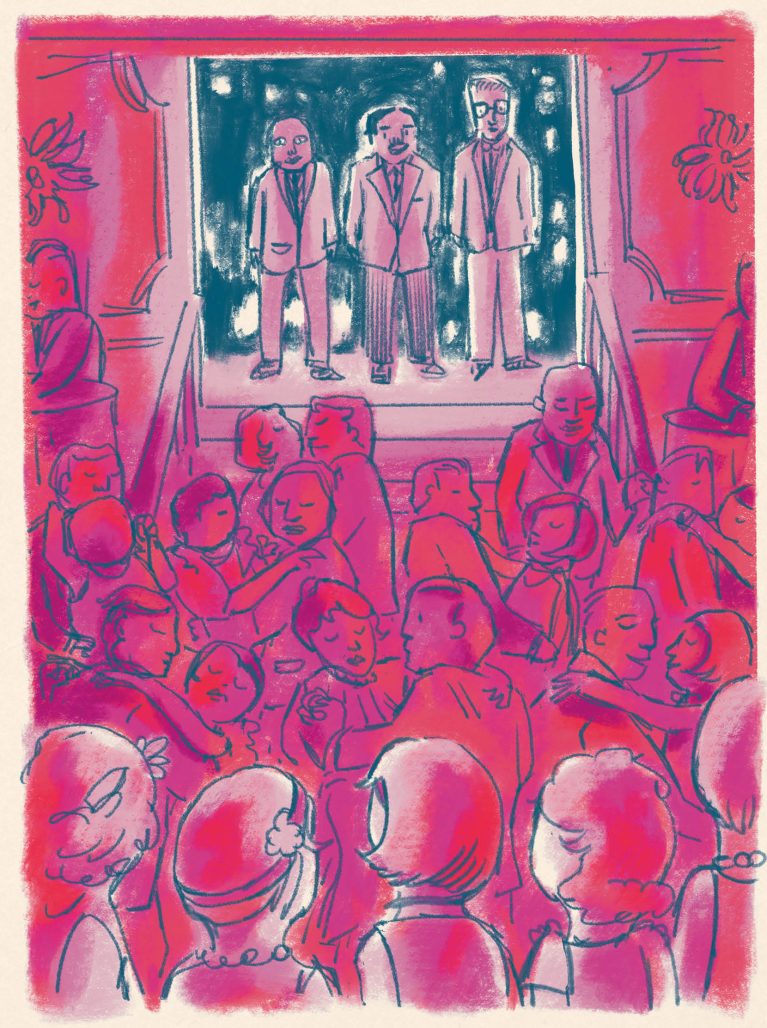
Powell: Can you explain what the term manong means? And did you have any relatives or know of others who were descended from this first generation of migrant workers?
Ayuyang: The word “manong” means “older brother.” It’s the way you address an older male relative you consider a brother or cousin. It’s a word from the Filipino dialect spoken in the Ilocos region of the Philippines. The wave of Filipino immigrants that came to the U.S. in the 1920s-30’s are considered the Manong Generation because they were mostly men, bachelors, who came from the Ilocos region. My family is actually from Ilocos Sur, and my great grandfather and his brothers (and a couple of years later my grandfather) on my mom’s side were a part of the Manong Generation and settled in San Francisco in the early/mid 1920s.
Powell: The consequence of chasing the American Dream plays a big part in Bobot’s narrative, especially given what he has to endure as a laborer in spite of his extensive educational background. What has the American Dream meant to you growing up as a first-generation Filipina? And how does Bobot’s reality compare to your parents’ experiences?
Ayuyang: I continue to feel so much gratitude for what my great grandfather, grandfather, and the many other Filipinos did one hundred years ago in order to make a better life for themselves and support their families back home. The same goes for my own parents who came to the States in the 70’s during the fourth wave. Just to have the bravery to leave the familiarities of home, and travel to another country and adapt to all the cultural differences — I fully understand the sacrifices made and I just want to honor them, for everything they have done not only for their families and communities, but for America, through these books.
Powell: Just as it did in Blame This on the Boogie, music figures dramatically into the plot for The Man in the McIntosh Suit. Did you have an existing playlist in mind of songs you wanted to use to frame the story, or was it more spontaneous?
Ayuyang: Early on, I created a playlist of 1920s and 1930s standards for me to listen to while writing and drawing, just to get into the film noir and romantic mindset, but then I started to pick songs with lyrics that were very specific to certain scenes in the book just like a soundtrack for a movie. So hopefully, readers of the book can play some of the songs during future readings to get a more immersive, cinematic experience.
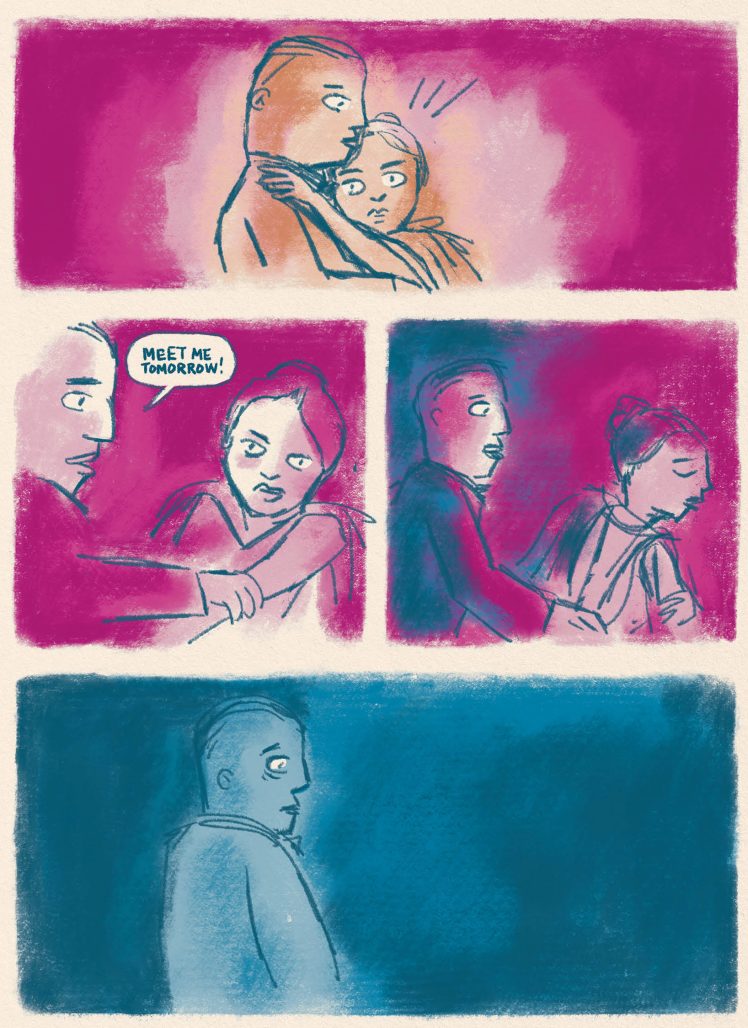
Powell: I loved the color palate you chose to portray the realities of the different characters’ lives, their dreams, and their pasts. That and the musical undertones effectively lend itself to a kind of cinematic movement across timelines. Can you talk about the process of how you developed the artistic style of the book?
Ayuyang: Thanks, yes, that’s exactly what I wanted to do with color in this book. In Blame This on the Boogie, I used all the colors of the rainbow so that it would be like a Technicolor musical, and with The Man in the McIntosh, I wanted to use a smaller color palette throughout, picking a color that was close to the black and white of 1920s-30’s film noir movies. So, I chose cool blue colors for the city scenes and mostly green and sepia tones for the farm scenes. Then I used bright pinks and purples to match Bobot’s emotional state at certain moments in the book. Then for flashbacks, I used subtler pinks and orange tones as a mix of Bobot’s current emotions and his nostalgia for the past. In the beginning, I had plans to use colored pencil and Copic markers, but I started to figure out how to use my iPad, and quickly loved how the Oil Pastel brush in Procreate made this blurry, filtered, luminescent look reminiscent of classic film noir movies. For the line art, I used Procreate’s Derwent Pencil brush.
Powell: What were some of the challenges, either narratively or artistically, that you encountered while writing and drawing the story?
Ayuyang: I think the main challenge was writing fiction again after writing autobiographical, memoir comics all these years, but I felt so connected to these characters that it almost felt like writing about family. I also was nervous writing a mystery graphic novel which is a totally different beast, but I welcomed the challenge, being a fan of the detective mystery genre.
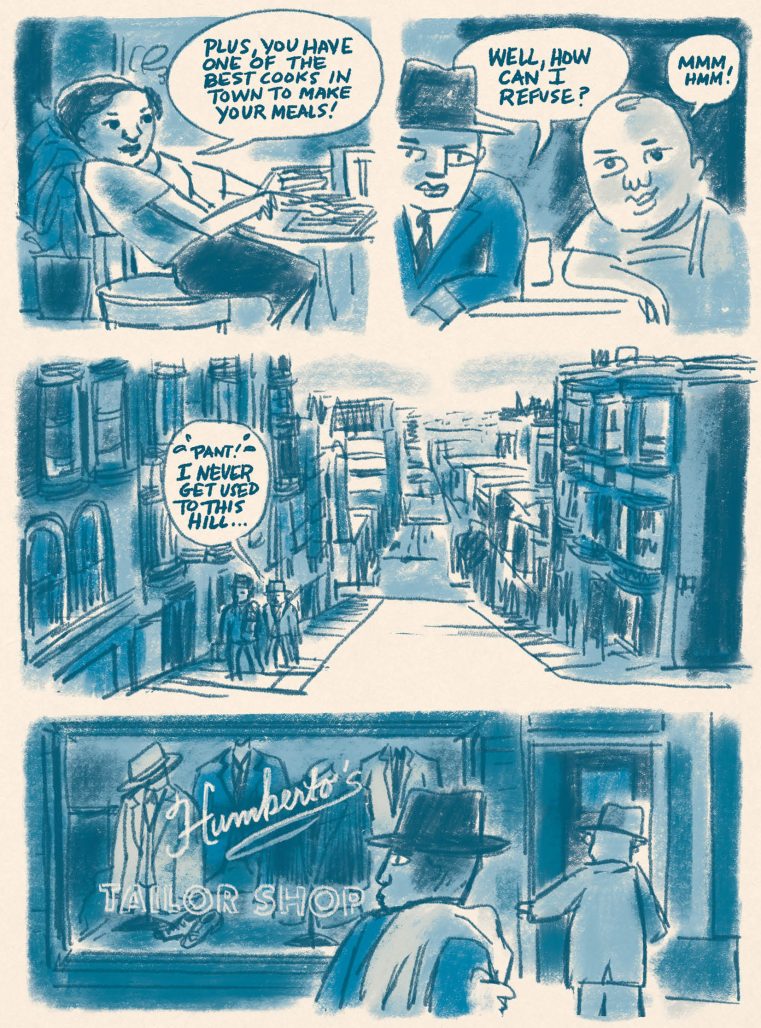
Powell: How many books are planned in the series? And seeing as the locale of the story is set in Watsonville, California, will the mob violence that took place in 1930 where Filipino farm workers were beaten figure into future books?
Ayuyang: Towards the end of The Man in the McIntosh Suit, you can begin to see the hostility and violence that Filipinos faced in Watsonville, and then the characters’ various reactions and how the anti-Filipino sentiment affects the direction of all these characters’ story arc. I have at least 2 more books planned in this series because there are so many stories that I want to tell about Bobot and the other characters in this book, and they will definitely cover many aspects of the Filipino American immigration story, including the obstacles that they faced such as discrimination and racism which affected many of the decisions they had to make in order to survive in America.
Published by Drawn & Quarterly, The Man in the McIntosh Suit is out in stores now.


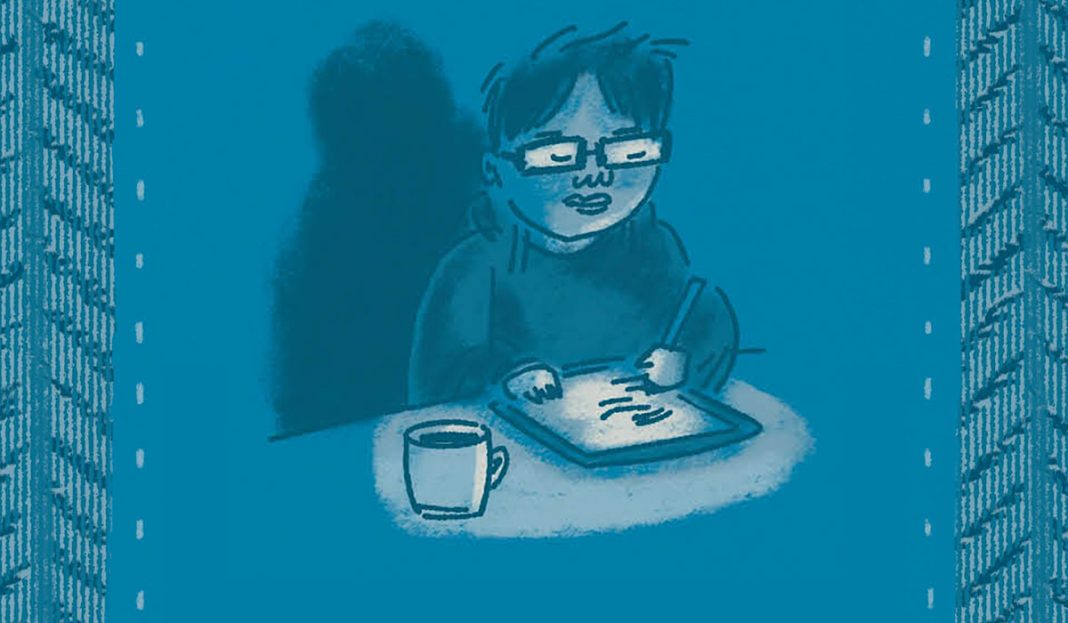
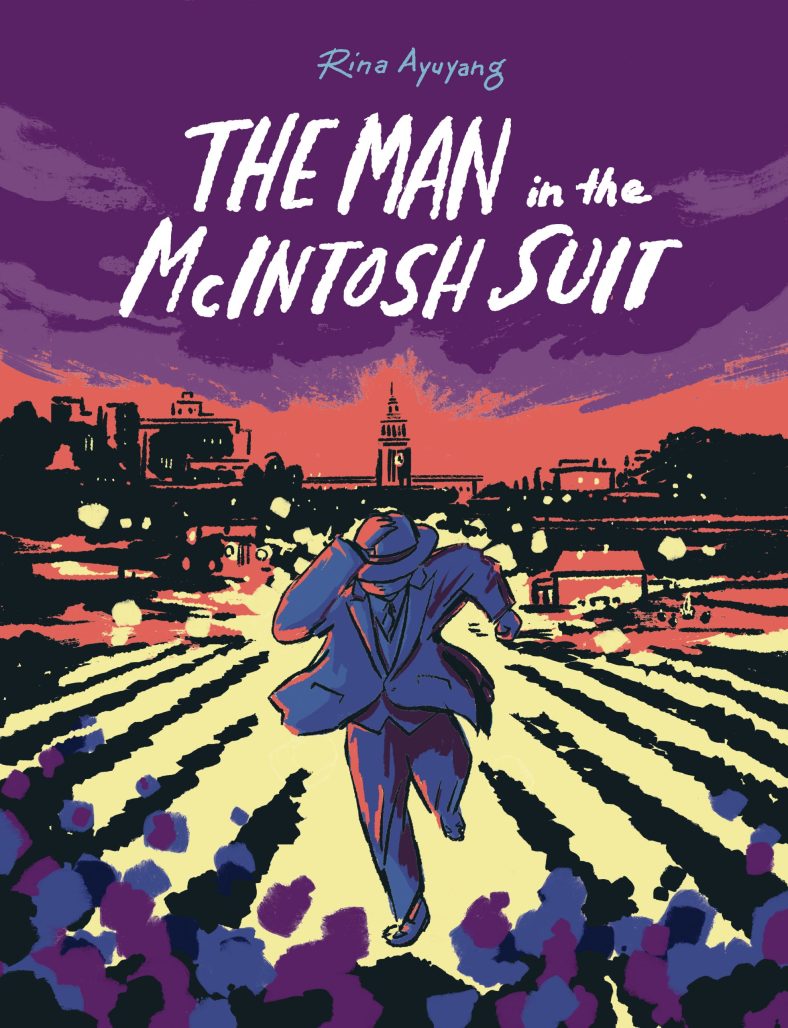
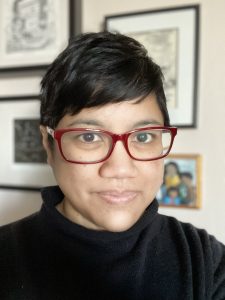





Loved this post – heress my feedback –
Thanks for reading , Love The Blog !!
Thanks – TheDogGod – Pomeranian Puppies & Adult Dog Guides & Tips pomeranianpuppies.uk
Comments are closed.